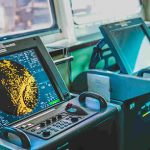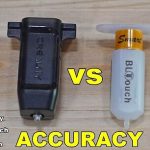Sealability is important since marine electronic devices are constantly exposed to salt and fresh water during use, not to mention inclement weather and the full wash down cleaning process. These devices are tested to an outdoor specification to ensure functionality even if they reside in an enclosed cockpit. Water entering the housing can lead to corrosion of the device electronics, shortening the life expectancy of the product. It can also short out the electronics that drive the display,


again affecting product life expectancy. Water may also seep in and condensate on the screen, making the device unusable for a period of time until the condensation clears and the display can be clearly seen. All of these scenarios reinforce the importance of tightly sealing the touchscreen within the device to avoid these potential failure modes.
Product Robustness
A critical requirement for touch-enabled marine devices is product robustness, which can include a durable front surface, no wear or degradation of optical coatings that may be applied to the front surface, a standard shaking test, and wide operating temperature ranges. A vibration test is conducted by placing the marine electronic device on a shaking machine for a predetermined amount of time. This test mimics the boats’ sustained vibration from the engines and hard jarring from rough seas. Since marine electronic devices are on ships from the equator to the poles, these touch-enabled devices need to be reliable in a wide operating temperature range.



Comments are closed